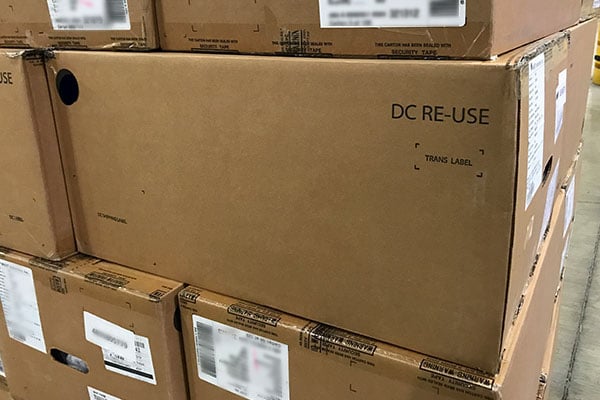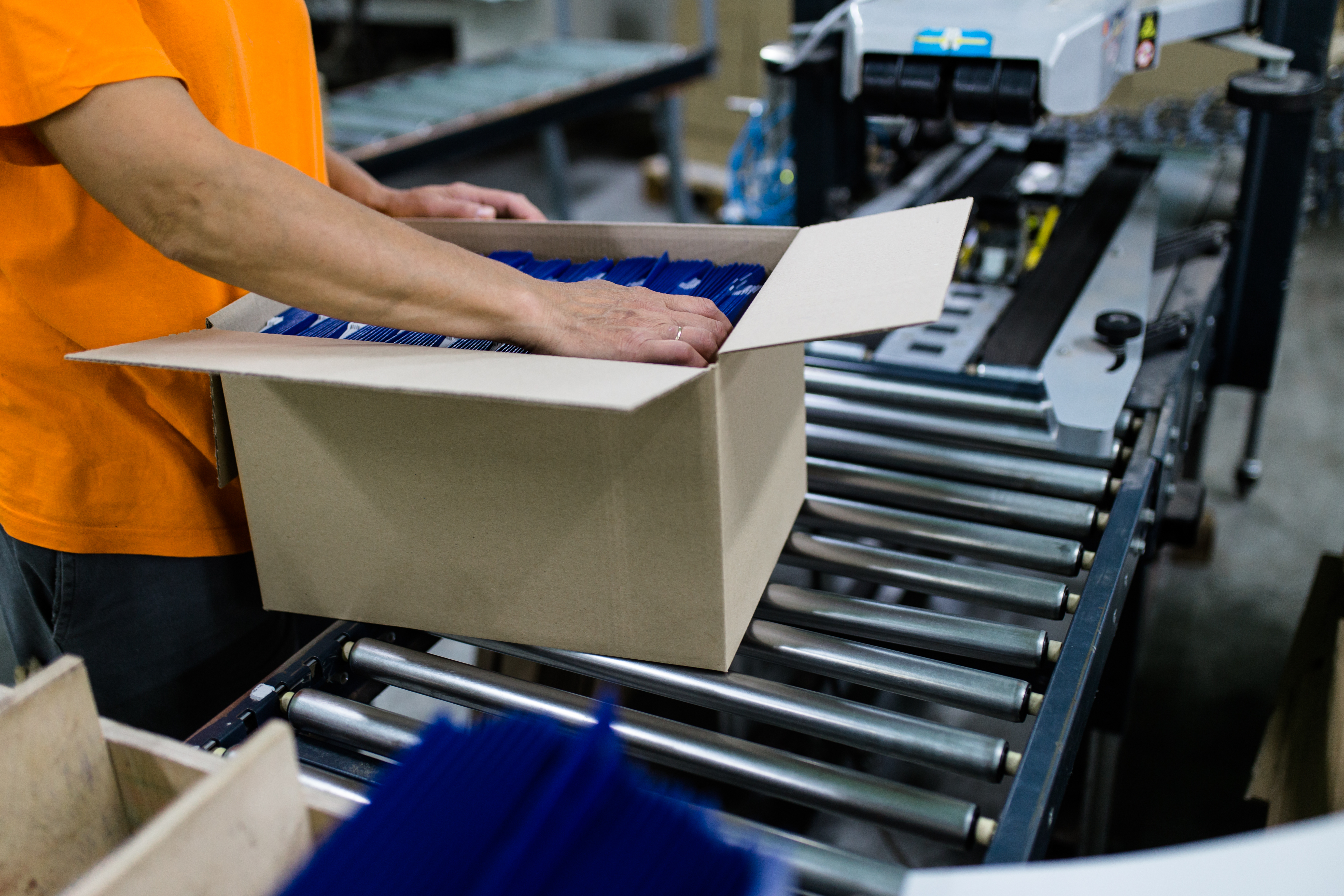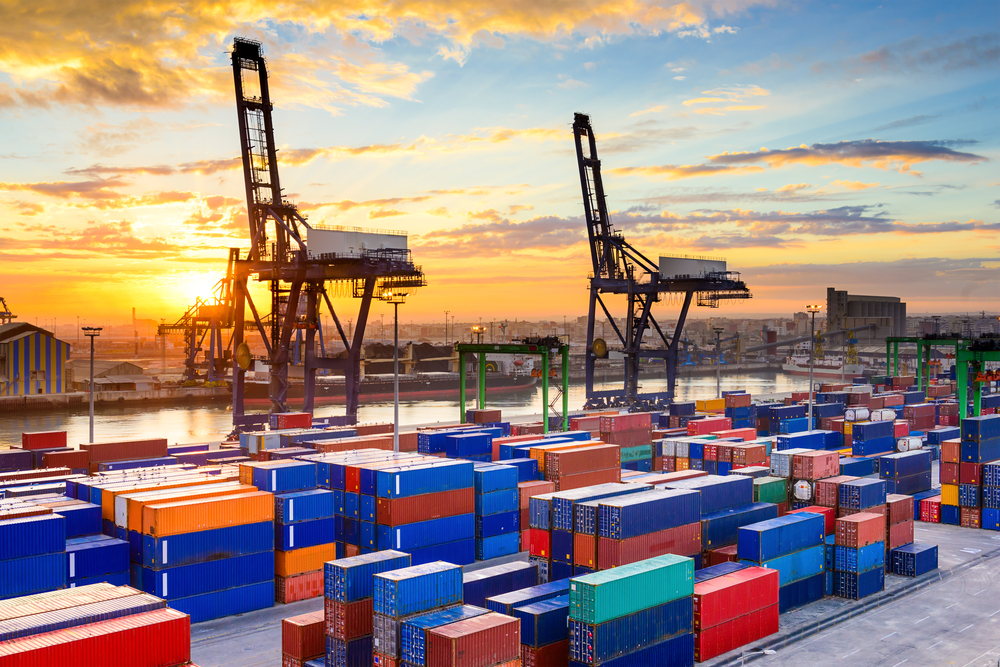Alternative models for managing packaging
There are multiple business models that companies use when managing retail and transport packaging from North America or Europe for products manufactured and packaged by South and Southeast Asia OEMs. Some options include:
Factory controlled and/or sourced packaging
Many companies rely on product factories to outsource packaging production. Package design, testing, and procurement is delegated to the factory. In other cases packaging is initially designed at the brand’s home office. The designs and guidance are sent to the product factory in South and Southeast Asia (SEA). The SEA product factory is responsible for finding a local packaging company to produce packaging that conforms to brand standards. The product factory may then test the packaging for compliance with standards established by the brand.
With this model, the brand usually lacks visibility into the factory sourced suppliers for auditing or compliance purposes.
Brand and retail-managed packaging
Internal packaging teams develop packaging, often working with specific companies to prototype and sample packaging solutions. The brand coordinates performance testing and ultimately appoints specific companies to supply the approved packaging to their Asian factories. The factories are responsible for procuring the approved packaging from brand-appointed sources.
There are, however, instances when the product is sold through a retailer that has developed their own packaging standards. In those instances, the product factory may be required to test the packaging to conform to standards established by the retailer. REI, Costco, and Amazon are examples of retailers, warehouse clubs, and ecommerce platforms that frequently develop their own packaging standards for brands.
Coordinating the design and testing of brand and retail-managed packaging can be time-consuming and expensive. And in the case of retail-managed packaging, brands lack control over their packaging standards and testing.
Outsourced packaging
Brands work with packaging experts that have an expertise in designing and sourcing packaging in South and Southeast Asia. Leveraging extensive SEA vendor networks enables outsourced packaging companies to streamline the strategic oversight, sourcing decisions, compliance to brand standards, and daily management of packaging needs required by brands.
Packaging deviations from brand standards
Creating processes and metrics that drive accountability for the product factory to comply with packaging standards is an important component of making this packaging model successful. Unfortunately, there are many possible situations that might cause packaging to inadvertently deviate from brand standards including:
- Multiple product factories are used to meet production requirements and each product factory might have a different interpretation of brand standards
- Each product factory could be a separate company causing a lack of centralized communication regarding brand standards
- New raw materials could be substituted for the materials originally specified because of on-going shortages of specified materials
These are just a few of the scenarios which may occur without the knowledge of the brand if the product factory is tasked with sourcing the packaging. These situations cause many brands to struggle when trying to get the product factory to produce packaging that complies with brand standards.
Calculating the “true cost” of packaging decisions
Packaging costs extend beyond the raw material, labor, and manufacturing costs associated with designing and producing packaging. To obtain the true cost of packaging, it is necessary to consider how the package performs throughout the entire supply chain journey — including how a package functions as it is shipped from the factory to any of multiple destinations which may include stops at a distribution center (DC), a consolidation center, a retailer, or an individual customer (who would receive the product via an ecommerce shipment). Consider the following when determining your true packaging costs:
Optimize cube density
Design packaging solutions that optimize cube density. When your products are packed more efficiently, you can ship more products in each carton. There are several factors to take into consideration including the number of SKUs, folding patterns, cross docking or pick and pack and how many factories are used for production. How cartons are stacked on pallets and then loaded into containers also play a key role. By maximizing carton efficiency, you will ship more product in each container. You avoid paying higher freight rates to “ship air” in packages that contain underutilized space.
 Apparel transport carton dimensions are specified to be fully packed to maximize cube density throughout the supply chain.
Apparel transport carton dimensions are specified to be fully packed to maximize cube density throughout the supply chain.
Design packaging that can be reused for outbound shipments

Maintain brand integrity
Brands frequently invest in color management, artwork, sustainable sourcing and other brand- centric services to make sure that packaging reflects favorably on brand image. If packaging is sourced from multiple suppliers across different regions and countries, it can be a complex task to maintain brand guidelines, especially from thousands of miles away. Working with an external packaging partner with a local team in Asia that is focused on your brand standards, and has quality processes and checks in place, helps maintain your brand integrity.
Promote distribution center efficiencies
Improve the available housing space at your DCs by shipping packages that have been right sized for each product. Labor costs can also be reduced by designing packages that can be faster and easier to open for either transport or inspection.
Reduce product damage and shrink
In order to protect your products through their transit and distribution, packaging needs to be designed to withstand climate and temperature changes. If your packaging cannot withstand the stresses it will encounter during transit, product damage may occur.
Improve time to market
Each time a package is handled efficiently, and repackaging and returns are avoided, your products will cycle through your supply chain more quickly. This allows you to accelerate the return on investment of your manufacturing and distribution costs.
Accurately calculating these additional costs can be a fairly nuanced process. Tapping into the expertise of Packaging Solution Providers can help you capture the true costs of packaging decisions.
Industry expertise drives cost savings throughout the packaging supply chain
In his book, Outliers, Malcolm Gladwell discussed the concept of accumulated knowledge that makes someone an “expert” in their field. He used the idea of 10,000 hours of working in the trenches, sleeves rolled up, in acquiring an in-depth, comprehensive, nuanced understanding of a specific topic. Those who acquired and learned from this in-depth experience became highly productive experts that could quickly apply accumulated insights to new situations and create powerful, targeted solutions for similar business challenges.
In a similar vein, working with experienced Packaging Solution Providers who have accrued insights regarding the successful design and implementation of customized packaging solutions can help you minimize costs throughout your entire packaging supply chain.
Cross-functional teams provide strategic solutions

In addition to the cost savings opportunities described above, Packaging Solution Providers can deploy teams of experts who have cross-functional training. Team members may have experience working across multiple industry segments including apparel, footwear, sporting goods, outdoor equipment and consumer electronics. When team members have served in diverse roles like package design, package engineering and supply chain management, they can provide comprehensive insights when designing customized packaging solutions that incorporate the needs of multiple functional areas of your organization. Nothing can replace “feet on the ground” experience — the cumulative knowledge of experienced teams is invaluable in designing holistic, optimized solutions to manage your specific packaging needs.
Extensive industry experience prevent problems
Packaging solution providers rely upon deep and broad experience base to anticipate potential problems and design solutions to proactively mitigate these problems.
Deviations from brand packaging files
For domestic manufacturing sites, if there is an error in the packaging file, the packaging producer will involve you to make sure that the file is corrected to support your packaging design intentions. In remote locations, the packaging supplier may make file corrections that presume to know your intentions without actually including you in the design clarification process. This can lead to producing packaging, at scale, that deviates from packaging specifications and that may fail in the field.
Unauthorized changes to raw material selections
Sometimes, a well-intentioned “enhancement” made during production can inadvertently cause the package to either deviate from brand standards or cause a manufacturer to miss meeting sustainability targets. For example, in one instance, a remote packaging manufacturer added a matte polypropylene (PP) coating to the top layer of a corrugated package. The remote packaging manufacturer thought the PP coating enhanced the package appearance. However, the PP coating caused the appearance of the package to deviate from brand standards. The coating also rendered the package non-recyclable, which impaired the manufacturer’s ability to meet corporate sustainability goals.
Geographic variability might cause unplanned deviations from raw material specifications
There can be regional variability in raw material standards and definitions. Remotely sourced raw materials, selected without quality control oversight, can result in substandard packaging system performance and, ultimately, in packaging failures.
Experienced packaging supply chain specialists can provide unique cost saving solutions
Packaging supply chain partners with extensive international experience managing global brands that are manufactured in SEA can aggregate their experience across both industries and vendors to devise unique cost saving solutions for their customers.
We recently worked with an international consumer electronics company to develop a comprehensive innovative solution that allowed overall lighter weight packaging that provided millions of dollars in airfreight savings.
How internal resources can leverage packaging solution providers
Global brands face extraordinary supply chain complexity when managing production and distribution in SEA. Although internal supply chain management teams may be tasked with ensuring all logistical and packaging needs are met on both a daily and forecasted basis, sometimes internal teams can benefit by leveraging the expertise of external Packaging Solution Providers. Specific ways that external providers can augment internal teams include:
- Providing additional capacity when business needs exceed internal personnel resources
- Help manage new product launches that may include:
- Entering new markets
- Selling to new customers
- Establishing sales in new regions
- Introducing new distribution models
- During times of organizational flux, including changes in workforce capacity resulting from external forces, like a pandemic, external Packaging Solution Providers can provide a source of continuity to your organization.
How can internal resources help external packaging solution providers succeed?
Ideally, two levels of internal, ongoing support will be available to provide sufficient organizational resources to help External Packaging Solution Providers be successful. At a senior level, having top level management clearly articulate the business benefits of using external resources can help obtain organizational “buy-in” from internal teams. At the operational level, a designated internal project manager can give ongoing, daily support to the External Packaging Solution Provider to keep moving the project forward.
External Packaging Solution Providers can deploy a team of expert personnel with deep experience in packaging to develop customized solutions for your complex distributed packaging needs. These solutions will improve your packaging efficiencies, decrease your total packaging costs, and help you meet sustainability goals. When urgency is required, third party packaging suppliers have the resources to quickly design and implement new solutions for your needs — they can often get a new solution up and running more quickly than internal teams.
If you're ready to partner with a trusted, experienced packaging provider, contact us today to start the process.




